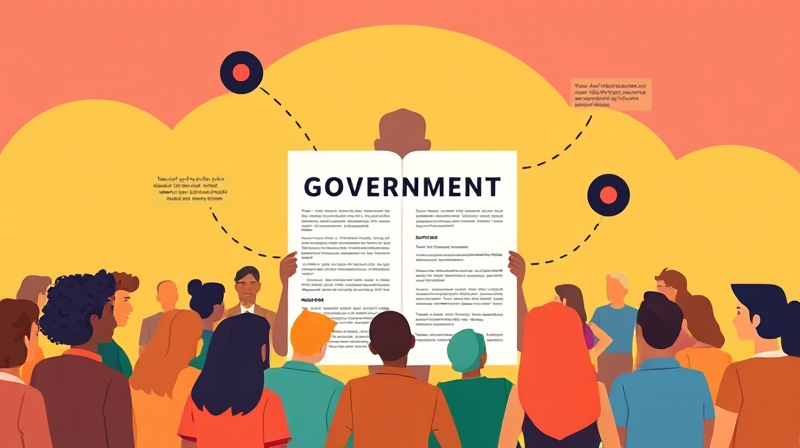Government reports and documents can often seem overwhelming. They are filled with technical terms and complex language that can turn the wealth of important information into a puzzling maze for many readers. In recent years, however, there has been a growing movement to break down these barriers through a plain-language approach. This method not only clarifies the content but also empowers more people to engage with and benefit from government information.
Understanding the audience is the very first step in translating dense government reports into plain language. Before even putting pen to paper, ask yourself: who is the reader? Consider their level of expertise and their familiarity with the subject matter. This awareness guides you in crafting an interpretation that is welcoming and easy to understand.
Building a Clear and Concise Message
Simplicity is the essence of a plain-language approach. When creating an interpretation of government documents, focus on using clear and concise language. This means avoiding jargon, technical terms, and long, convoluted sentences. Instead, opt for everyday words and break your text into manageable chunks.
- Speak plainly: Use language that resembles everyday conversation.
- Keep it brief: Create short sentences that directly state your point.
- Chunk your text: Break up large blocks of information into paragraphs that cover one idea at a time.
This approach ensures that every reader, regardless of background, can grasp the essence of what the report is saying without feeling overwhelmed.
Using this method means you can help demystify government reports, making sure key information is communicated directly and effectively. This is especially important when critical issues that affect communities, such as public health or safety, are in play.
Organizing Information for Maximum Impact
To truly help readers, organize your information in a logical order. A well-structured interpretation should have a clear and intuitive flow. Start with the most important points, then move on to supporting details and background context if needed. This method not only makes it easier for readers to follow along but also helps them retain the essential lessons.
Consider using descriptive headers and bullet points to segment the content. Visual markers like these are beneficial in guiding the reader through potentially complex topics. Breaking complex ideas into smaller, understandable parts gives every reader an opportunity to connect with the material, thereby reducing frustration and confusion.
The Role of Context and Explanation
One of the most common issues when interpreting government documents is the assumption that the reader has a background in the subject matter. This is where context and explanations become indispensable. Always provide the necessary background and define any technical terms in plain language. Explaining acronyms and abbreviations can prevent important details from being lost in translation.
Including additional context helps to paint a clearer picture of the subject. For example, when presenting data or statistics, briefly describe the circumstances around the findings or the purpose behind the study. This approach not only clarifies the data but also builds trust with the reader by demonstrating that every effort has been made to present accurate, understandable information.
Enhancing Understanding with Visual Aids
Visual aids are a powerful tool in the plain-language arsenal. Charts, graphs, and infographics can simplify complex data and highlight key points without overwhelming the reader with numbers and details. When interpreting government reports, consider how these graphical elements can enhance the reader's understanding.
Using simple, uncluttered visuals can help illustrate the most important trends or outcomes without the need to sift through dense paragraphs of text. A well-placed image or diagram can be the bridge that connects raw data with practical, real-world implications, making government information not only easier to digest but also more engaging.
Staying True to the Original Message
While it is important to simplify the language, it is equally important to maintain accuracy and trustworthiness in your interpretation. Every piece of information extracted from a government report has significance, and any interpretation must reflect the integrity of the original text. It is essential to double-check that your summary accurately represents the data, findings, and underlying messages without omitting crucial details or implications.
In order to preserve the original intent, always review the document carefully and, if possible, have your interpretation evaluated by someone with subject expertise. This extra layer of scrutiny helps ensure that while the language becomes simpler, the authenticity of the content remains intact.
Making Government Information Work for Everyone
Ultimately, the goal of the plain-language approach is to transform otherwise intimidating government documents into accessible resources that can empower every citizen. By focusing on the needs of your audience, using clear and concise language, organizing information logically, and incorporating context along with visual aids, you are making a lasting impact on how people interact with public information.
This method is more than just a technique—it’s a commitment to transparency and public service. It ensures that every person, regardless of their background or expertise, has access to the information that affects their lives. When government information is accessible, it opens the door to a more informed and engaged community. Knowledge shared in plain language has the power to inspire change, drive progress, and build a more equitable society.
Adopting a plain-language approach is not just a style choice; it is a reimagining of how we communicate public information. It underlines the belief that information should be accessible to all, thereby strengthening the connection between citizens and their government.
As we move forward, let us all take the responsibility to communicate clearly and inclusively. By doing so, we create an environment where government reports are tools for education and empowerment, contributing to a more participatory and enlightened society.








